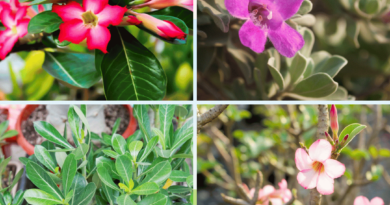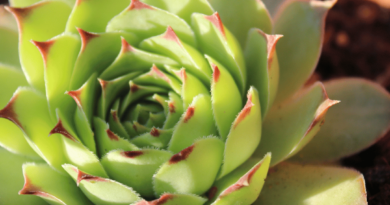How to Identify Different Types of Succulents: A Beginner’s Guide
Succulents are a type of plant that store water in their leaves, stems, and roots, making them able to survive in dry conditions. They have become increasingly popular as indoor and outdoor plants due to their unique shapes, colours, and low maintenance requirements. However, with hundreds of different varieties, it can be challenging for beginners to identify them correctly. In this beginner’s guide, we will cover the basics of identifying different types of succulents.
Basic Anatomy of a Succulent
To identify different types of succulents, it’s essential to understand their basic anatomy. Succulents have thick, fleshy leaves or stem that store water. They also have shallow root systems that spread out wide rather than deep into the soil. Some common examples of succulent plants include the jade plant, aloe vera, and cacti.
Different Types of Succulents
There are hundreds of different types of succulents, each with its unique characteristics. Some of the most common types of succulents include:
- Cacti: Cacti are a type of succulent that typically have spines instead of leaves. They come in a variety of shapes and sizes and are often used as ornamental plants.
- Echeveria: Echeveria is a type of rosette-shaped succulent with thick, fleshy leaves. They come in a variety of colours, including green, blue, pink, and purple.
- Haworthia: Haworthia is a small succulent with thick, triangular leaves that grow in a rosette pattern. They are often used as indoor plants and can be easily propagated.
- Sedum: Sedum is a low-growing succulent that comes in a variety of shapes and colours. They are often used as ground cover in outdoor gardens.
- Crassula: Crassula is a type of succulent with thick, fleshy leaves that grow in a rosette pattern. They come in a variety of colours and are often used as houseplants.
Identifying Succulents
To identify different types of succulents, you need to consider their colour, shape, texture, and size. Some key features to look out for include:
- Leaves: Look at the shape, texture, and colour of the leaves. Some succulents have smooth leaves, while others have spines or bumps.
- Stem: Some succulents have thick, fleshy stems, while others have thin, wiry stems. Consider the shape and texture of the stem when trying to identify a succulent.
- Flowers: Some succulents produce colourful flowers, which can help you identify them. Pay attention to the size, colour, and shape of the flowers.
- Size: The size of the succulent can also be a useful identifier. Some succulents are small and compact, while others can grow to be several feet tall.
Chapter 4: Caring for Succulents Once you’ve identified your succulent, it’s important to know how to care for it correctly. Succulents are generally low maintenance and only need to be watered once a week. They prefer bright, indirect light and can be grown indoors or outdoors depending on the variety. Overwatering is one of the most common mistakes people make with succulents, so be sure to let the soil dry out completely between waterings.
Conclusion: Identifying different types of succulents can be a fun and rewarding hobby for beginners. With a little knowledge of succulent anatomy and some observation skills, you can easily identify the different types of succulents in your collection. Remember to also care for your succulents




